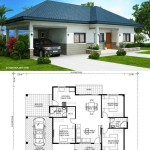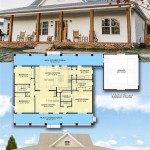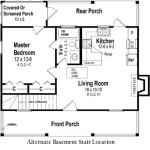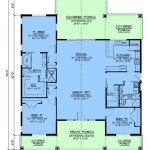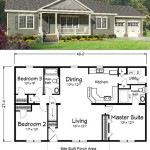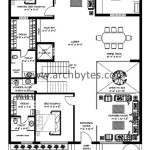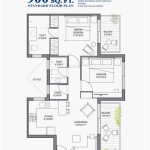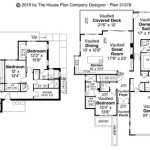Tiny Log Cabin Floor Plans: Maximizing Space and Rustic Charm
The allure of a log cabin evokes images of cozy retreats nestled in nature. Combining this rustic charm with the minimalist lifestyle of tiny homes presents unique design challenges and rewarding opportunities. Careful planning and creative floor plan design are crucial for maximizing space and functionality in a tiny log cabin. This article explores various aspects of tiny log cabin floor plans, highlighting key considerations for prospective builders and homeowners.
Embracing Vertical Space
One of the most effective strategies for maximizing space in a tiny log cabin is to utilize vertical space. Loft areas are a popular solution, providing additional sleeping quarters, storage, or even a small office space. Steeply pitched roofs, characteristic of many cabin designs, create ample room for a loft. Incorporating built-in shelving and drawers into the walls further optimizes storage capacity, keeping the floor area free and clear.
Clever staircase design plays a crucial role in maximizing vertical space. Spiral staircases are a space-saving option, although their steepness may not be suitable for everyone. Alternatively, a staircase with built-in storage underneath can provide valuable hidden storage for items like shoes, blankets, or cleaning supplies. Consider incorporating a ladder to access a loft space if space is extremely limited, acknowledging potential accessibility limitations.
Multi-Functional Furniture and Spaces
Multi-functional furniture is a cornerstone of tiny house living and equally important in a tiny log cabin. Sofa beds, fold-down tables, and ottomans with storage are excellent choices for maximizing functionality. Consider a Murphy bed that folds away into the wall, transforming a living room into a bedroom at night. Built-in benches with storage underneath provide seating and a place to stow away belongings.
Creating multi-functional spaces is another key strategy. A kitchen island can serve as a prep area, dining table, and workspace. A bathroom vanity can incorporate a fold-down changing table. These design choices maximize the utility of each square foot within the cabin.
Prioritizing Natural Light and Ventilation
Natural light and proper ventilation are crucial for creating a comfortable and healthy living environment in any small space, especially a tiny log cabin. Large windows and skylights maximize natural light, reducing the need for artificial lighting and creating a sense of spaciousness. Carefully positioned windows can also capture passive solar gain, reducing heating costs during colder months.
Proper ventilation is essential for managing moisture levels and preventing mold growth, particularly in a log cabin where humidity can be a concern. Install operable windows and consider incorporating a ventilation system to ensure adequate airflow throughout the cabin.
Choosing the Right Log Cabin Style
Selecting the right log cabin style is crucial in optimizing the floor plan. A-frame cabins, with their steeply pitched roofs, offer ample loft space but can limit headroom on the main floor. Traditional rectangular cabins provide more flexibility in layout but may require more complex roof designs to incorporate a loft. Consider the trade-offs between different styles and choose the one that best suits the desired floor plan and lifestyle.
Researching various pre-designed tiny log cabin plans can provide inspiration and a starting point for customization. Many manufacturers offer customizable plans, allowing adjustments to room sizes, window placement, and other features. Working with a designer specializing in tiny homes and log cabin construction can ensure the final plan is both functional and aesthetically pleasing.
Integrating Outdoor Living
Extending the living space outdoors can significantly enhance the functionality of a tiny log cabin. A covered porch, deck, or patio creates an additional area for dining, relaxing, and entertaining. Consider incorporating built-in benches and storage into the outdoor space for added convenience. Outdoor living spaces seamlessly blend the cabin with its natural surroundings, maximizing the enjoyment of the tiny home lifestyle.
Incorporating strategically placed windows and doors can blur the lines between indoor and outdoor spaces. Large sliding glass doors can open the living area onto a deck, creating a sense of spaciousness and connection with nature. Thoughtful integration of indoor and outdoor spaces is essential for maximizing the livability of a tiny log cabin.

Tiny Log Cabin Kits Easy Diy Project Small Cabins

Pin On Home Plans

Tiny Log Cabin Kits Easy Diy Project Craft Mart

Budget Log Cabin Kit Floor Plans House

Small Log Homes Kits Southland

11 Free Small Cabin Plans With Printable Log Connection

Tiny Houses Living Large Southland Log Homes

Tiny Houses Living Large Southland Log Homes

12 Customizable Log Cabin Floor Plans For Your Future Build Hub

13 Best Small Cabin Plans With Cost To Build Craft Mart

